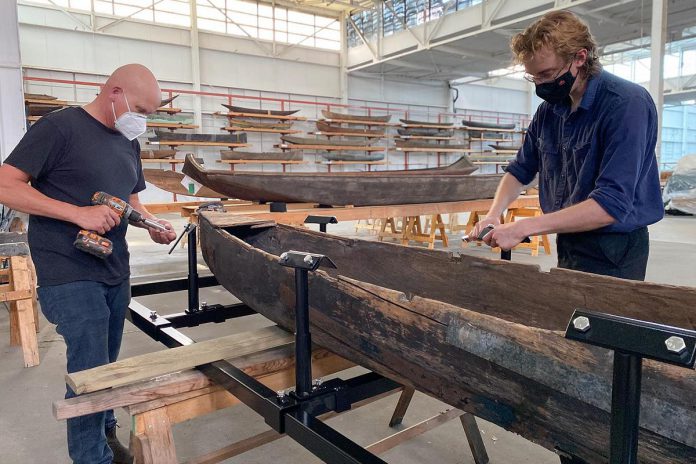
Anyone who has ever moved to a new home knows how time consuming, difficult, and expensive it can be. Now imagine what would be involved in moving more than 600 historically significant canoes, kayaks, and paddled watercraft to a new home.
That’s the challenge facing The Canadian Canoe Museum as it prepares for “the final portage” of the world’s largest collection of paddled watercraft to the museum’s new home currently under construction at the water’s edge on Little Lake in the heart of Peterborough.
What began as a collection of watercraft belonging to the late Professor Kirk Wipper, who donated it in 1994 to the organization that would become The Canadian Canoe Museum and open its doors to the public in 1997, has become a cultural asset of national significance. The move to the museum’s state-of-the-art new home at 2077 Ashburnham Drive later this year will mark a new era for the collection, providing what the museum’s curator, Jeremy Ward, calls “a game-changer” for the region.

“The museum is shifting from being a hidden gem to a truly national museum through the move,” Ward points out.
This shift isn’t just a result of the many, many conceptual and structural developments that will come with the move, including world-class educational programming, unique event space, and an adjacent waterfront campus that in itself will provide a scope of opportunity that wasn’t available at the museum’s land-locked location at 910 Monaghan Road.
It also means that, with the new 20,000-square-foot Exhibition Hall and similarly sized Collection Hall, the museum’s entire collection will be under one roof and accessible to visitors for the first time in the museum’s history, with a portion of the collection on display in the Exhibition Hall and the remainder held in the Collection Hall. At the museum’s Monaghan Road location, visitors could only see approximately 20 per cent of the collection on exhibit.
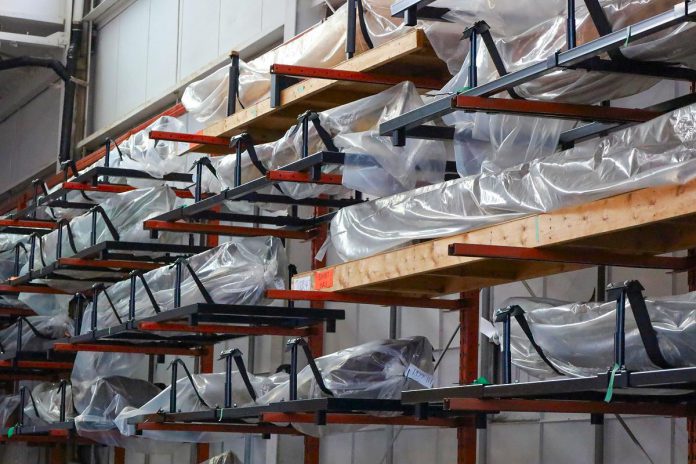
“People will have the opportunity to explore the full collection and see the scale and the magnitude of how many canoes and artifacts there are,” Ward explains.
But first, the watercraft collection must be prepared for the move to the new museum, scheduled to take place over the summer in time for the museum’s opening in the fall.
As anyone who has ever portaged even a single canoe will tell you, moving more than 600 of them — many of which are massive — is both challenging and rewarding.
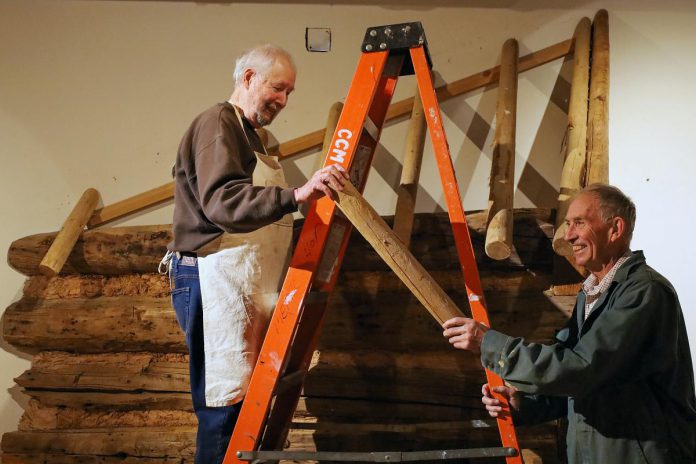
“Museums don’t typically make big moves like this, let alone museums like ours where the average artifact is 16 feet in length,” says Ward, adding that there are also 500 paddles and an archive and library to be moved as well. “It requires a lot of preparation.”
Fortunately, Ward explains, the museum has a committed group of employees, interns, and volunteers assisting with the move. Though the museum’s Monaghan Road location has only been closed to the public since Labour Day last year, the team first began the relocation process two years ago.
Why is the process so time-consuming?
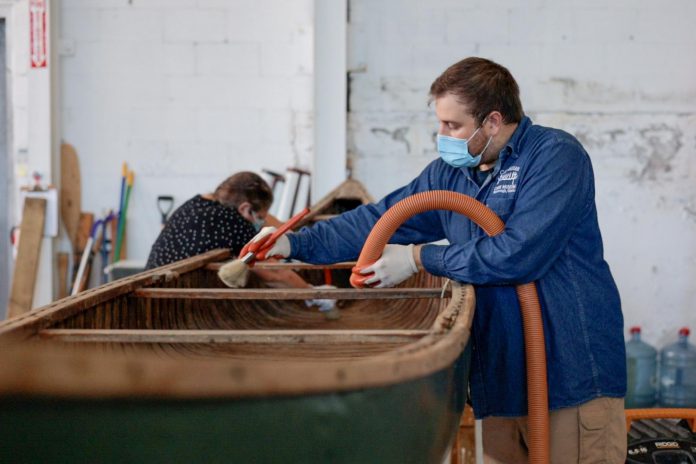
“We want to make sure that everything is properly prepared and cared for to enter our new home, a Class A museum facility,” Ward says.
Before moving any pieces, the small team examines each object and cleans, photographs, and documents it before moving the artifact to its cradle. Then a cradle is built for each individual vessel to support and protect it during transportation and storage.
Since each cradle has been custom-made dependent on the object’s shape and size, it takes between 45 minutes and one hour for the team to build a single cradle. Fortunately, all this work isn’t temporary, as the cradles are multi-purpose and will be used to display the artifacts not on exhibit that are housed in the Collections Hall.
VIDEO: Dismantling an exhibit at The Canadian Canoe Museum
Once relocated to their temporary home at the Collection Centre at the Monaghan Road location, the artifacts must be thoroughly but delicately cleaned using brushes, vacuums, and cloths. Each one is then photographed, documented, encapsulated, placed on the cradle, and tagged with its future location to make sorting effortless when it’s time to be moved into the museum’s new home.
Between the cleaning and cradle-building processes, it takes an average of two hours to prepare each canoe, kayak, and paddled watercraft for relocation.
“It’s a lot of work, so we are fortunate to have an incredible team supporting the relocation of the collection to its new home, where the conditions will support proper caring for generations to come”, Ward points out.
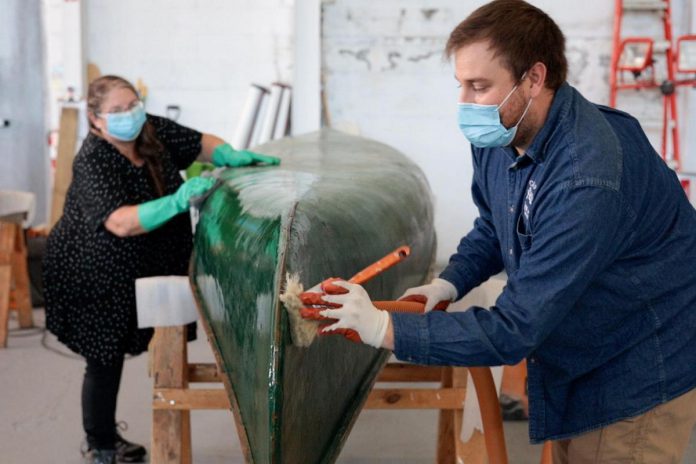
With some weighing more than 1,000 pounds, many of the largest canoes must be removed from the second story of the Monaghan Road building in the same way they entered: by a process the museum lovingly calls ‘The Big Lift’.
The crew uses hoists to evenly lift the canoe onto a cart, assembling a track system below it which is then used to transport the canoe out of an open hatch in the second floor of the building. A crane then lowers it to the ground, where it can be then moved into the Collection Centre.
During the Big Lift, staff, conservation experts, and volunteers assisted in the removal of large dugout canoes made from single logs, the longest and largest of the birch bark canoes including a 36-foot replica of a Montreal Canoe, and even a section of western red cedar tree that has been hugged by countless visitors as they attempt to put their arms around its massive circumference.
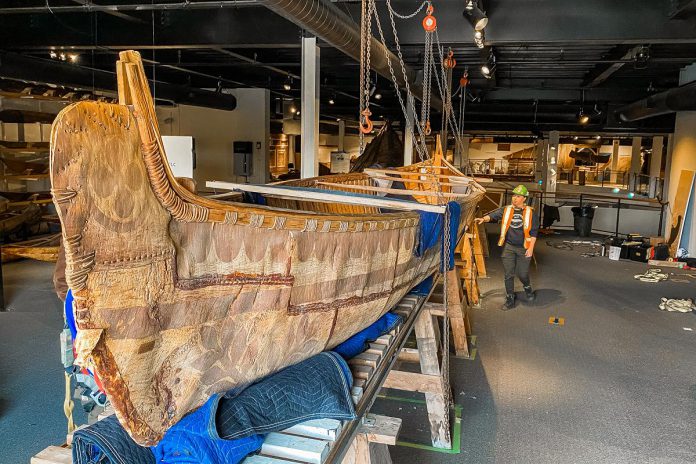
Ward explains that such a careful process to relocate the collection is necessary because each artifact is a piece of history.
“It’s extremely important because the artifacts hold so many stories and meanings and are essential for our collective histories, here and nationally and across the world,” he says. “These artifacts come from all over, so it’s really important that we’re handling them with care.”
Construction of the new Canadian Canoe Museum is progressing steadily, with framing and sheathing of the walls complete and mechanical and electrical work underway. The museum is anticipated to open in the fall of this year, with exhibit installation beginning in the summer to prepare for that moment.
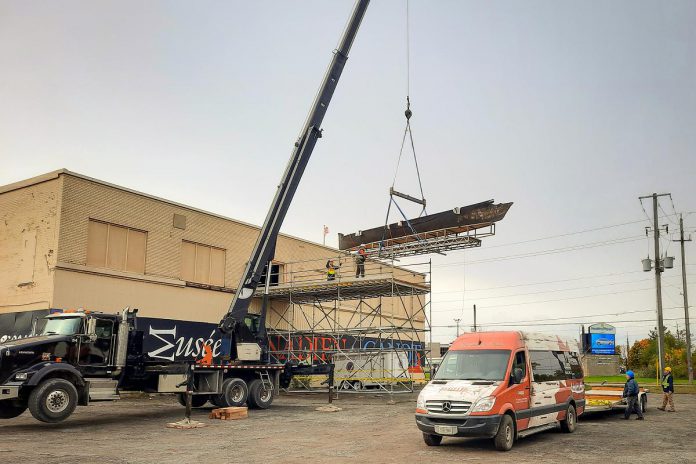
The first artifact to be moved from temporary storage into its new home will undoubtedly require the assistance of a crane once again. Originally built in 1876, the HBC Timber Frame structure is the largest artifact in the collection at 42 feet by 25 feet. It was the provision store of the Hudson’s Bay Company trading post in Michipicoten on Lake Superior, an important point on the canoe routes across the continent.
Adding to the long list of individuals who are helping to prepare the museum’s collection for its move, the crew had to enlist the help of specialized timber framers to carefully dismantle the structure and properly prepare it for relocation.
The Exhibition Hall at the new museum will be divided into seven unique thematic exhibits. The museum is working alongside Indigenous and non-Indigenous community members to ensure stories are accurately represented.

“We have been working with many different communities to have different voices in our exhibition hall,” explains Ward. “We want to hear stories from all across Canada, not just from where we are. The canoes and the stories come to us from coast to coast to coast. So we want to make sure that we’re hearing and sharing voices from every corner of Canada.”
Ward notes that many of the volunteers who are helping to move the The Canadian Canoe Museum’s collection have been volunteering for more than two decades, with some even from the days when Professor Wipper’s collection moved to Peterborough in the 1990s.
“It’s a lot of the same people that were supporting us back in those days, and they’re still coming back to support this big move,” he says. “The museum relies so much on volunteers and community members. They’re amazing.”
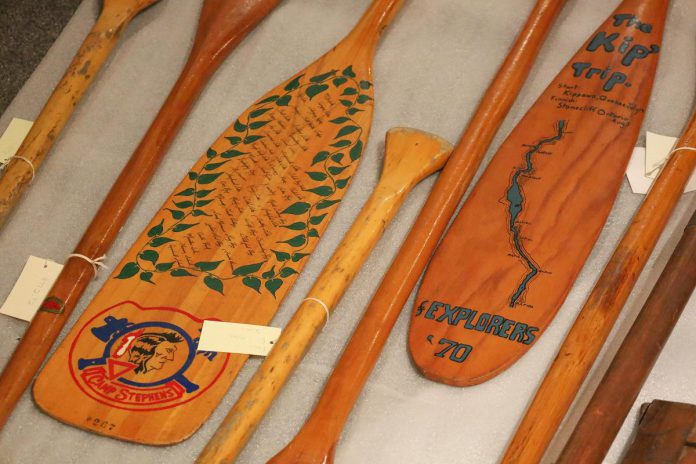
Despite the dedication of staff and volunteers, the expense of preparing and moving the collection is significant.
As The Canadian Canoe Museum prepares for “the final portage” of its treasured collection this summer, they will be launching an exciting “Move the Collection” campaign in the coming weeks to support the move.
For updates on the campaign, or to make a donation to the museum now, visit canoemuseum.ca/new-museum and follow them on Facebook, Instagram, and Twitter.
kawarthaNOW is proud to be the official media sponsor of The Canadian Canoe Museum’s Move the Collection campaign.


























